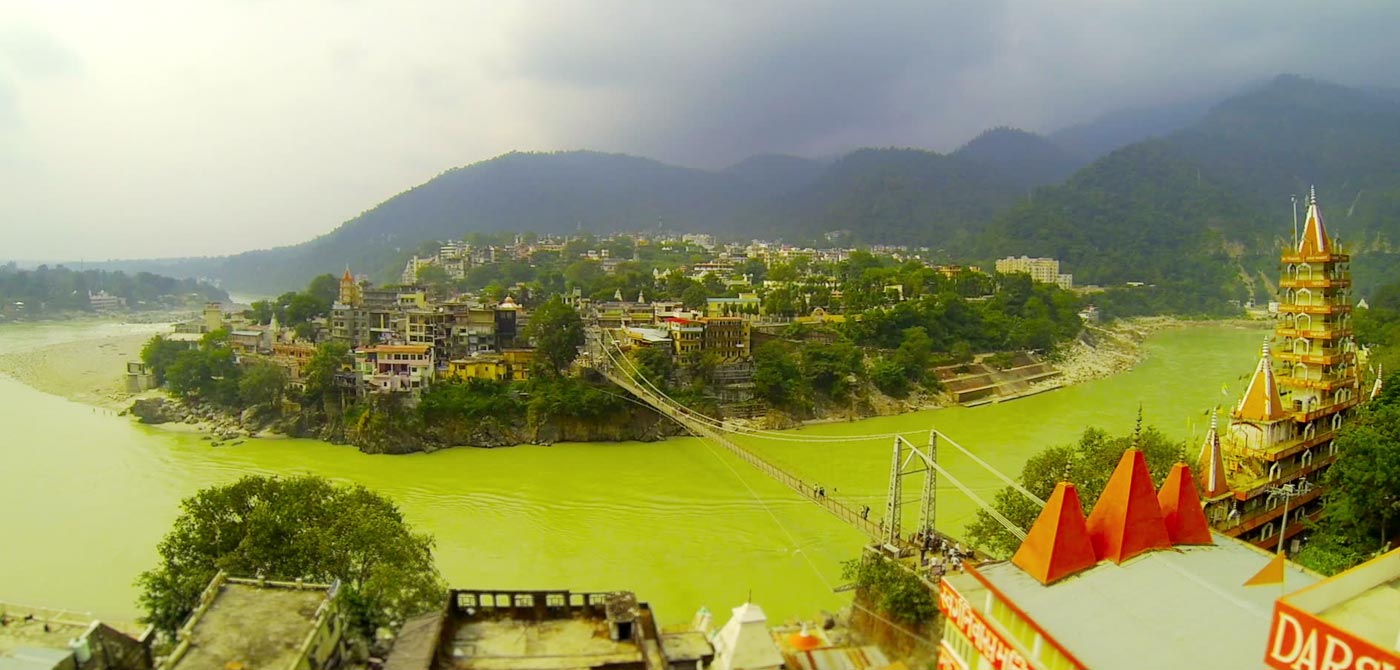Lakshman Jhula/Ram Jhula
The Lakshman Jhula is believed was made by the Lord Lakshman “The brother of Lord Rama” by using his bow and arrow in order to cross the mighty river Ganga. The current bridge was built by the British after the original got washed away in the flood. It is interesting to note that the structure is still standing and sturdy. In the year of 1939 they managed to erect that structure. Prior to this it was a rope and wooden structure.
Bridge the gap – is a very popular phrase but the significance of this phrase is very universal and inspiring. The construction of bridges is done not just to solve the commutation problem between to locales but to create a bond of brotherhood among the two hubs & the peoples living there. Lakshman Jhula was thus created to bring close the two towns of the Uttarakhand together by the Britishers when the ancient holy wooden bridge washed away in a flood.
The Lakshman Jhula is one of the revolutionary & innovative bridges in India. It is basically a motorable suspension bridge that connects two Garhwal Range districts with tensile strength and resilient load carriage capacity. Lakshman Jhula is the first suspension bridge in Uttar Pradesh (know in Uttarakhand) and one of the iconic constructions in Rishikesh, the spiritual tourism destination in Uttarakhand. The Lakshman Jhula suspension bridge is about 450 ft above the thunderously flowing river Ganges and it joins the Tapovan town of Teri Garhwal with Jonk town of Pauri Garhwal districts. Tourists can enjoy the sway of the bridge in the howling mountain airs and feel the adrenaline pumping within.
The bridge is cemented however you can still feel turbulence. best times are early mornings and late nights. Visitors can experience the feeling of being alone if one stands in the centre of the bridge and watching river ganga is very thrilling and divine experience. Travelers can also buy fish foods to feed the fishes of river Ganga from the Lakshman Jhula and don't miss a rafting tour by boat on the holy Ganga and have a swim with the Ganga. The brother of the Lakshman Jhula bridge, the Ram Jhula is located just about 2 kilometers down the Ganges flow-stream.
Near the Lakshman Jhula, there are enough restaurants, bakery's, and plenty of shops. Lakshman jhula is about 15 KM away from Rishikesh city center and about 34 KM away from Haridwar.
History of Lakshman Jhula-
Lakshman Jhula has its significance in the most popular Hindu Mythology, Ramayana. As per the tales, Lord Ram and Lakshman had crossed the river Ganga at this place. The duo crossed the river Ganga with the help of just two ropes. In order to praise this act of fearlessness, Lakshman Jhula was built.
This 284 feet long suspended bridge was the main point of contact between the villages until the year 1889. However, one of the floods in the year 1924 completely washed away the bridge.
Initially the Lakshman Jhula was made up of jute, however, after the floods, it was replaced by a much stronger and sturdier iron bridge in the year 1939. The reconstruction was instigated in the same place and the name of the bridge was also not changed as per the significances.
The bridge now stands tall above the river Ganga and happens to be one of the major tourist attractions in the tourism corridor of Rishikesh.
However, the Lakshman Jhula is no more used for communication from 12th July 2019 for safety concerns.
This bridge is almost 96 years old and it is not capable of handling the load of the current traffic.
In order to preserve this iconic tourist attraction, one more bridge has been built and the Lakshman Jhula stands as a mere tourist attraction near to it.
 +91 9799050299
+91 9799050299 
